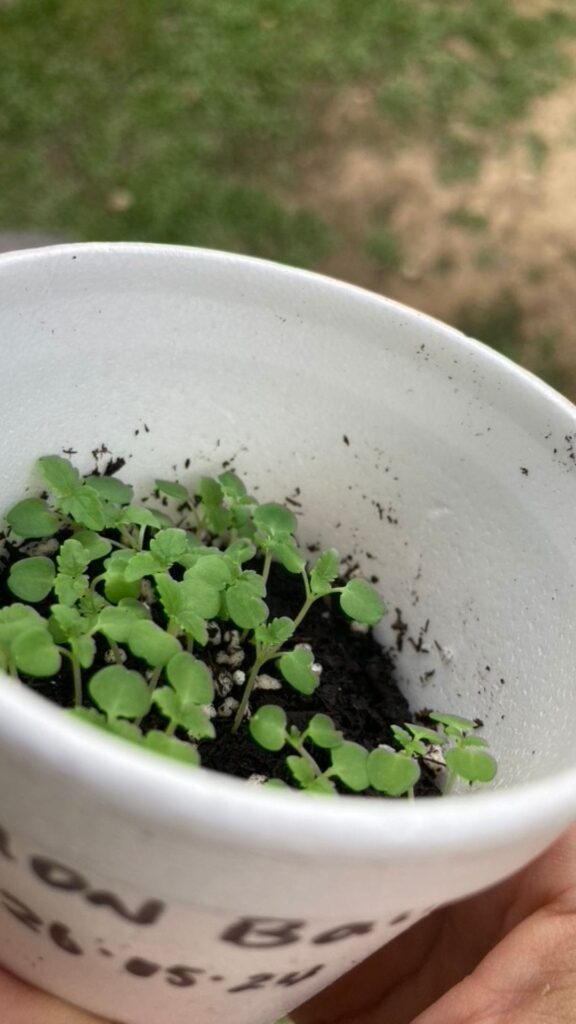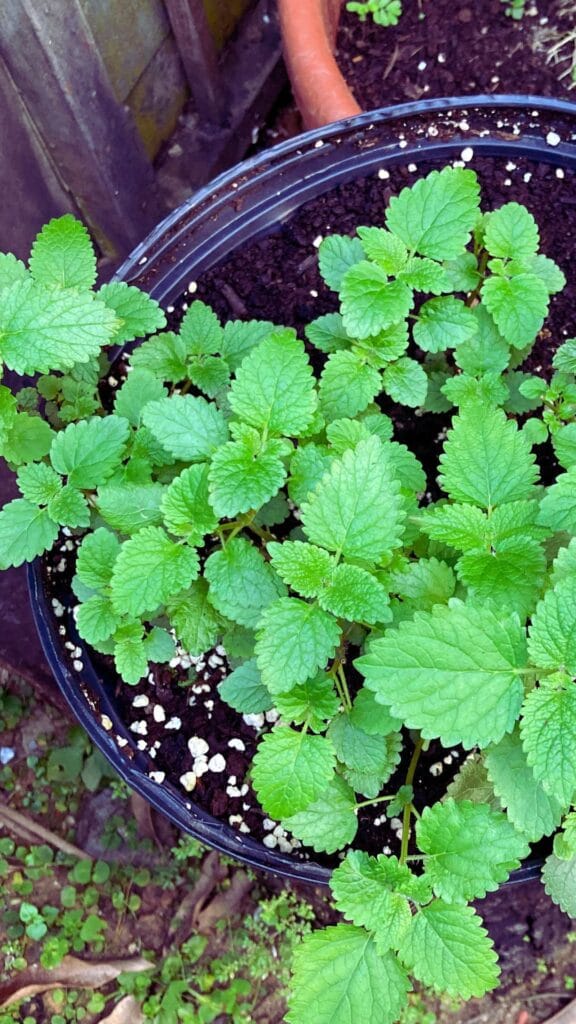There’s a special kind of joy that comes from growing your own herbs, especially when they’re as versatile and fragrant as lemon balm. Its bright, lemony scent is instantly uplifting, and the fresh leaves are perfect for a soothing cup of tea (my absolute favorite!).
If you’re looking to add a resilient and rewarding herb to your garden, learning how to grow lemon balm from seed is a fantastic place to start. It’s surprisingly easy, even for beginners, and soon you’ll have an abundance of this wonderful plant.
Ready to dig in? Let’s turn those tiny seeds into a thriving herbal patch!

Getting Started with Lemon Balm Seeds
The journey to a thriving lemon balm plant begins with good quality seeds. When I’m looking for a trusted source for my garden, I’ve had great results with the HOME GROWN USA brand. Their premium seeds produce robust and healthy plants, which is exactly what you want when starting out.
Starting with a good seed can make all the difference. That’s why we recommend the HOME GROWN USA Premium Lemon Balm Seed brand, known for producing robust, healthy plants.
Lemon Balm Seeds for Planting Gardens Indoors or Outdoors
When you’re choosing seeds, look for reputable sources to ensure good germination rates and healthy plants.
Pro Tip for Your Amazon Shopping!
If you’re not an Amazon Prime member, you can get free, fast shipping on thousands of items—including all of the products we recommend!
Start your free 30-day trial of Prime now and enjoy free shipping on your order!
How to Grow Lemon Balm from Seed: Step-by-Step Instructions
Lemon balm is quite forgiving, but a little preparation goes a long way. Follow these steps for a successful start:
Step 1: Timing and Location
- When to Sow: Lemon balm can be started indoors 6-8 weeks before your last spring frost or sown directly outdoors after all danger of frost has passed. For most climates, late spring/early summer is ideal for outdoor planting.
- Where to Plant: Lemon balm thrives in full sun to partial shade. In hotter climates, a spot with some afternoon shade is best to prevent scorching.
- Containers vs. In-Ground: While it loves rich soil in the ground, lemon balm can be quite enthusiastic and spread rapidly. If you’re concerned about it taking over, consider planting it in a large pot or a dedicated raised bed to keep its growth contained.
Step 2: Soil Preparation
Lemon balm isn’t too picky, but it prefers well-draining soil rich in organic matter.
- In-Ground: Amend heavy clay soils with compost to improve drainage, or sandy soils with compost to help retain moisture and nutrients.
- Containers: Use a good quality potting mix designed for herbs or vegetables.
Step 3: Sowing the Seeds
Lemon balm seeds are tiny, and they have a special requirement: they need light to germinate!
- Prepare your planting area: Rake the soil smooth and remove any large debris.
- Sow shallowly: Scatter the tiny seeds on the surface of the prepared soil. Do not cover them with much soil – a very light dusting of fine soil or vermiculite is all they need, or you can even leave them uncovered.
- Gently moisten: Mist the soil surface with water to avoid disturbing the seeds.

Step 4: Watering and Care for Seedlings
Consistency is key, especially during germination.
- Keep Moist: The soil needs to stay consistently moist (but not waterlogged) until the seeds germinate, which can take 7-14 days. Use a gentle mister to water.
- Thinning: Once your seedlings have developed a few sets of true leaves and are about 2-3 inches tall, thin them so they are spaced 12-18 inches apart. This gives each plant enough room to grow robustly.
- Sunlight: Ensure your indoor seedlings get plenty of light (from a sunny window or grow lights) to prevent them from becoming leggy.
Step 5: Managing Aggressive Growth (A Key Tip for Beginners!)
As your lemon balm grows, you’ll notice it’s a vigorous plant. While this means more for you to harvest, it can also mean it spreads quickly.
- Pinch Back: Regularly pinch off the top sets of leaves to encourage bushier growth and prevent the plant from becoming leggy.
- Flower Control: Lemon balm will flower in summer. If you want to prevent it from self-seeding and spreading even more, snip off the flower stalks before they go to seed. This also encourages the plant to put its energy into producing more flavorful leaves.
- Consider Barriers: If planting in a garden bed, you might consider a root barrier or planting it in a bottomless pot sunk into the ground to keep its roots contained.

Harvesting Your Lemon Balm
You can start gently harvesting leaves once your plant is well-established, usually when it’s about 6-8 inches tall.
- Best Time: Harvest in the morning after the dew has dried but before the sun gets too hot, as this is when the essential oils are most concentrated.
- How to Harvest: Snip stems a few inches above the ground, making sure to leave enough foliage for the plant to continue growing. You can take up to one-third of the plant at a time.
How to Grow Lemon Balm from Seed: Common Questions
How long does it take for lemon balm seeds to sprout?
Lemon balm seeds typically germinate in 7-14 days. They need light to sprout, so be sure to sow them on the surface of the soil.
Does lemon balm need a lot of sun?
Lemon balm thrives in full sun to partial shade. In very hot climates, it can benefit from some afternoon shade to prevent its leaves from scorching.
Can I grow lemon balm in a pot?
Yes, growing lemon balm in a pot is an excellent idea! It’s a vigorous plant and can spread quickly, so a pot is a great way to keep its growth contained.
How often should I water my lemon balm plant?
Water your lemon balm regularly, especially when it’s young or if you’re growing it in a container. Keep the soil consistently moist but not waterlogged.
Why are my lemon balm leaves turning yellow?
Yellowing leaves can be a sign of overwatering or poor drainage. Ensure your soil is well-draining and that your plant is not sitting in soggy conditions.
Conclusion: Enjoy Your Homegrown Lemon Balm!
There’s nothing quite like the satisfaction of sipping a cup of tea made from an herb you grew yourself from a tiny seed. Lemon balm is a rewarding plant for any gardener, offering not only beauty and fragrance but a wealth of soothing properties.
Now that you know how to grow this wonderful herb, you’re ready for the next step!
Ready to use your bountiful harvest? Head over to our next post: What to Do with Lemon Balm: Benefits, Uses, and Creative Recipes!
For more detailed botanical information, you can check out this guide from The Old Farmer’s Almanac
